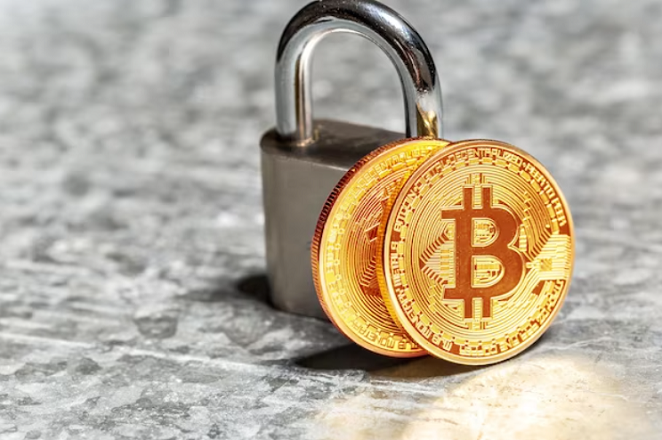Cryptocurrency has taken the world by storm, and for good reason. It’s decentralized, anonymous, and offers an unprecedented level of financial freedom. But with great power comes great responsibility, and in the world of cryptocurrency, that responsibility lies in safeguarding your digital assets. As we all know, the internet is a wild and dangerous place, and cryptocurrency is no exception. From hackers and scams to phishing attacks and more, there are countless threats lurking around every corner, waiting to pounce on unsuspecting crypto holders. That’s why it’s crucial to take every possible step to protect your investments and ensure maximum security.
Safeguarding your crypto assets isn’t just a matter of caution or paranoia, it’s a necessary step to ensure the long-term viability and value of your digital currency. Without proper security measures in place, your crypto holdings could be at risk of theft, fraud, or loss, potentially resulting in devastating financial consequences. That’s why we’ve put together this comprehensive guide to help you navigate the treacherous waters of cryptocurrency security. In this article, we’ll cover a range of strategies and best practices for safeguarding your crypto assets, including choosing a secure wallet, creating strong passwords, implementing two-factor authentication, avoiding scams and phishing attacks, and staying up to date with the latest security best practices. So buckle up, grab your notepad, and get ready to secure your crypto like a pro.
Understanding the Risks
Owning cryptocurrency comes with a fair share of risks. One of the most significant risks is hacking, where malicious actors gain access to your digital wallet and steal your crypto assets. Other risks include scams and theft, which can result in the loss of your entire investment. Each of these risks can have a severe impact on your crypto holdings, potentially leading to significant financial losses or even complete ruin.
Therefore, it’s crucial to take action to protect your assets. This means understanding the risks, choosing a secure wallet, creating strong passwords, implementing two-factor authentication, and staying vigilant against scams and phishing attacks. By taking these steps, you can significantly reduce the risk of losing your crypto assets and ensure that your investments are as secure as possible. Don’t let the risks of cryptocurrency ownership scare you away – with the right precautions and strategies, you can safeguard your digital assets and reap the rewards of this exciting and innovative technology.
Choosing a Secure Wallet
When it comes to storing your cryptocurrency, one of the most important decisions you’ll make is choosing a secure wallet. There are several different types of wallets available, including hardware wallets, software wallets, and paper wallets. Hardware wallets are generally considered the most secure, as they store your private keys offline and require physical access to use. Software wallets are convenient and accessible, but are also more vulnerable to hacking and other security threats.
When selecting a wallet, it’s important to look for features that can enhance its security, such as two-factor authentication, encryption, and multi-signature support. Two-factor authentication adds an extra layer of protection by requiring a second factor, such as a code sent to your phone or generated by an app. Encryption ensures that your private keys are kept safe and secure.
Some popular and trustworthy wallets include Ledger Nano X, Trezor Model T, Exodus, and MyEtherWallet. It’s important to do your research and choose a wallet that meets your specific needs and offers the right balance of security and convenience. And remember, creating strong passwords is also crucial for protecting your crypto assets, so be sure to follow best practices for password creation and management.
Creating Strong Passwords
Creating a strong password is crucial for protecting your cryptocurrency assets from unauthorized access. A weak password can easily be cracked by hackers, leaving your funds vulnerable to theft. To create a strong password, use a combination of letters, numbers, and symbols, and avoid using easily guessable information like your name or birthdate. It’s also important to avoid common password mistakes, such as using the same password for multiple accounts or using a password that’s too short or simple.
Remembering and managing multiple passwords can be challenging, but it’s essential for maintaining strong security. Consider using a password manager tool to securely store and generate strong passwords, and enable two-factor authentication whenever possible. By taking these steps, you can significantly reduce the risk of unauthorized access to your crypto assets and ensure that your investments are as secure as possible.
Implementing Two-Factor Authentication
Implementing two-factor authentication is an essential step in safeguarding your cryptocurrency holdings. Two-factor authentication adds an extra layer of security to your account by requiring a second factor, in addition to your password, to access your funds. This can include a code sent to your phone or generated by an app, a physical security key, or biometric authentication.
To set up two-factor authentication, simply enable it in your account settings and follow the prompts to verify your phone or other authentication device. Popular two-factor authentication apps include Google Authenticator, Authy, and YubiKey. It’s important to choose a reputable and secure app and to keep your authentication device in a safe and secure location. By implementing two-factor authentication, you can significantly reduce the risk of unauthorized access to your crypto assets and ensure that your investments are as secure as possible.
Avoiding Scams and Phishing Attacks
Scams and phishing attacks are common threats faced by cryptocurrency holders. These attacks can take many forms, including fake emails, social media messages, and websites that impersonate legitimate crypto exchanges or wallets. These scams often attempt to trick users into giving away their private keys or login credentials, which can result in the loss of funds.
To avoid scams and phishing attacks, it’s important to be vigilant and to always verify the authenticity of emails, social media messages, and websites before entering any personal information. Look for signs of fraud, such as misspellings or unusual URLs, and avoid clicking on links or downloading attachments from unknown sources. Additionally, consider using a hardware wallet or other secure storage method to protect your private keys. By staying informed and vigilant, you can reduce the risk of falling victim to these types of attacks and keep your crypto assets secure.
Staying Up to Date with Security Best Practices
Staying up to date with the latest security best practices is crucial for protecting your cryptocurrency investments. With new threats and vulnerabilities constantly emerging, it’s essential to stay informed and take action to protect your assets. Resources for staying up to date include online forums, news sources, and social media channels dedicated to cryptocurrency security.
Throughout this article, we’ve covered several key strategies for safeguarding your crypto assets, including choosing a secure wallet, creating strong passwords, implementing two-factor authentication, and avoiding scams and phishing attacks. By taking these steps and staying informed about the latest security best practices, you can significantly reduce the risk of unauthorized access and theft of your crypto holdings. We encourage all readers to take action and prioritize the security of their investments.
Conclusion
Safeguarding your cryptocurrency assets is a crucial step in protecting your investments and ensuring their long-term viability. With the rise of digital assets and the ever-evolving landscape of security threats, it’s more important than ever to take proactive steps to protect your holdings.
Throughout this article, we’ve covered several key strategies for maximizing the security of your crypto assets, including choosing a secure wallet, creating strong passwords, implementing two-factor authentication, and avoiding scams and phishing attacks. By taking these steps and staying informed about the latest security best practices, you can significantly reduce the risk of unauthorized access and theft of your crypto holdings.
In closing, we encourage all readers to prioritize the security of their crypto assets and to take action to protect their investments. We also invite readers to share their own tips and experiences in the comments section, as we believe that sharing knowledge and experience is key to strengthening the security of the cryptocurrency community as a whole. Remember, protecting your crypto assets is an ongoing process, and by staying vigilant and proactive, you can help ensure their long-term success.














Post Comment